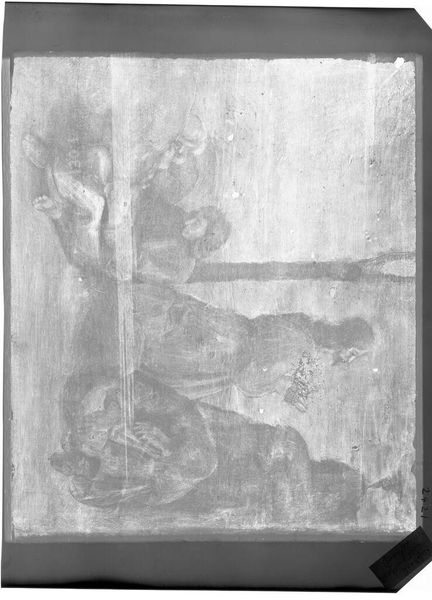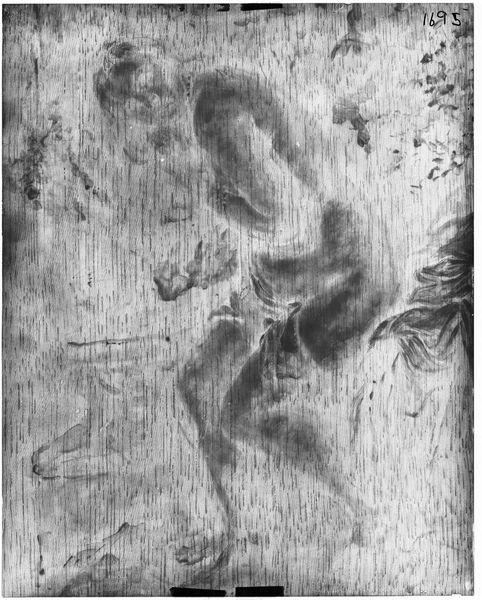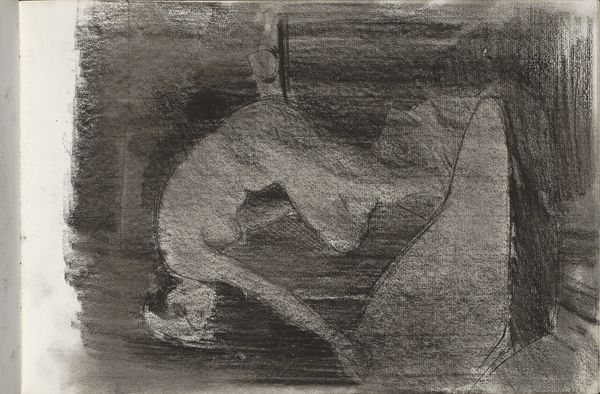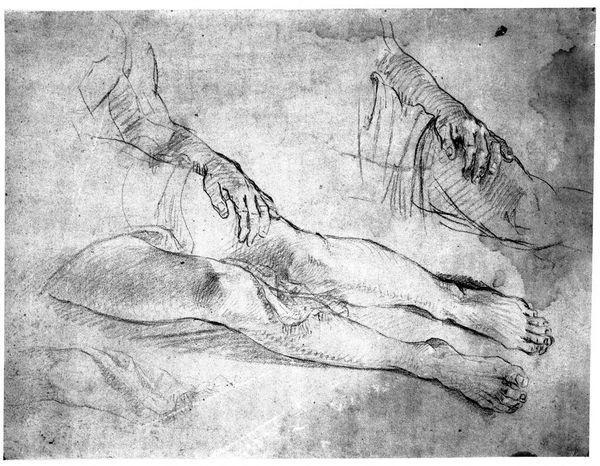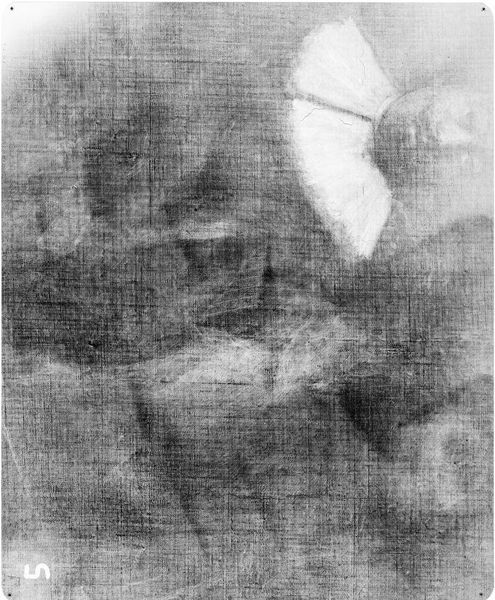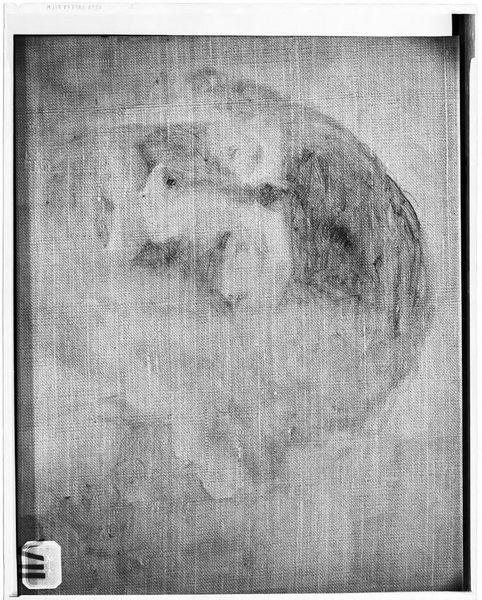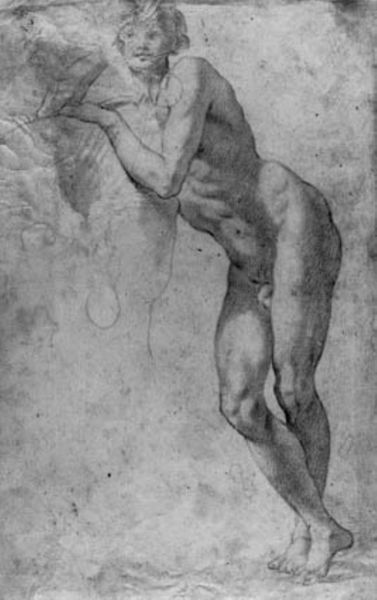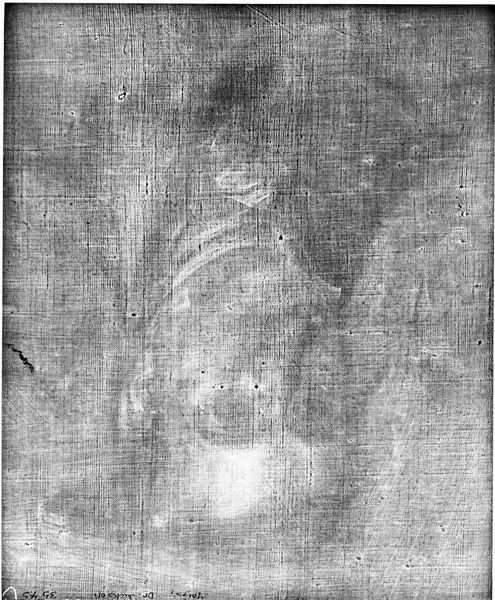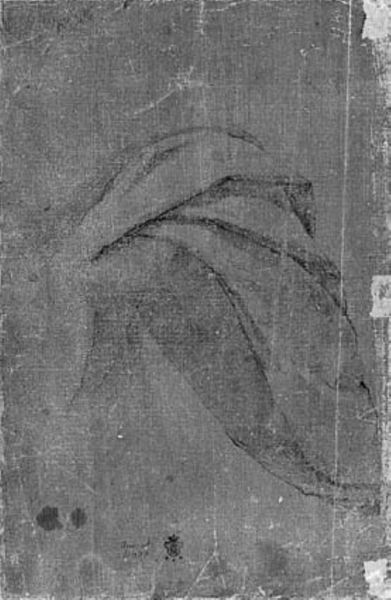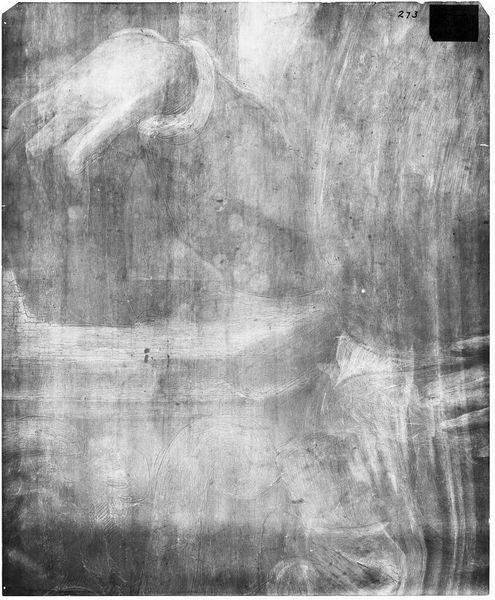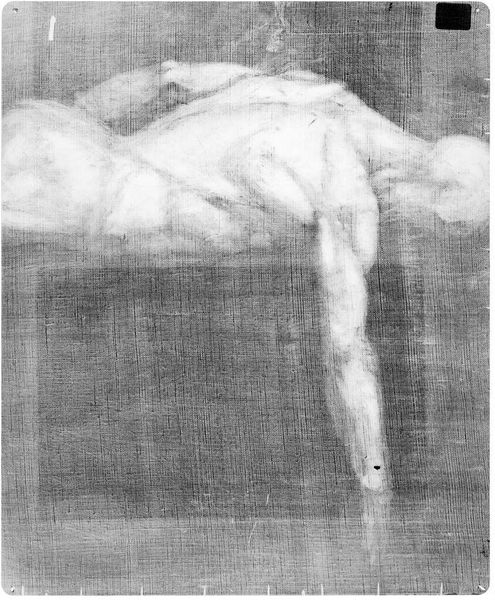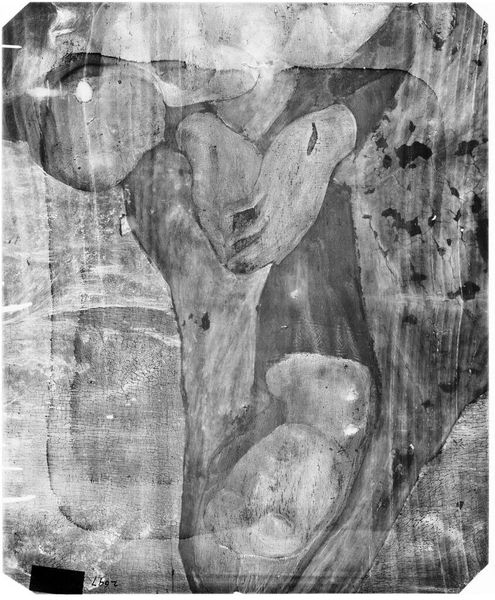
Male nude lying on his back with arms stretched upwards 1609 - 1675
0:00
0:00
drawing, intaglio, dry-media, charcoal
#
drawing
#
baroque
#
intaglio
#
charcoal drawing
#
figuration
#
dry-media
#
charcoal
#
charcoal
#
nude
Dimensions: 287 mm (height) x 428 mm (width) (bladmaal)
Curator: Here we have “Male nude lying on his back with arms stretched upwards,” a baroque drawing from the 17th century attributed to Vincenzo Dandini. It is part of the collection here at the SMK, created using charcoal, a dry media. Editor: My first thought? An almost theatrical sense of drama. The pose, the upward reach... It’s full of a raw vulnerability, but there is power too. Curator: I agree; Dandini’s handling of the male form within the artistic and social conventions of the period highlights the shift toward more dynamic and emotive depictions. He seemed to be looking back at Michelangelo while forging new artistic territories within Baroque style. The role of academic studies of male nudes was important in the system of artistic education and its relationship with the representation of ideals about the masculine identity. Editor: The almost monochrome palette amplifies the stark contrast between light and shadow, really emphasising the emotional weight. Considering the use of nude figuration across various historical, political and religious art contexts, I am keen to think about the body as a site where cultural and individual histories intersect. Can we speak of universal ideals of the body or is it the specificity and complexity of that moment in history that speaks through the artwork? How were such artistic depictions influencing the public’s conceptions of maleness? Curator: Well, these were typically studies. A way for artists to master form. This likely wasn't intended for public display. Its educational use and historical value should be taken into consideration. Although academic practice did create standards, and some critics might say constraints, for idealising the male figure at the time. The nude held different meanings, and access was hugely skewed by class and power dynamics. It is therefore difficult to know with any certainty how "the public" would perceive or engage with the piece at that point in time. Editor: A constant balancing act, isn’t it? Appreciating technical skill, understanding historical function, but never losing sight of the power dynamics inherent in the representation. It serves as a stark reminder that what we consider universal or timeless is often very tightly bound to particular social structures. Curator: Precisely, understanding art means confronting both the aesthetic achievements and the complexities of the cultures that fostered their creation. Editor: Absolutely, a conversation between the art and ourselves across the chasm of time. That's where its relevance lies.
Comments
No comments
Be the first to comment and join the conversation on the ultimate creative platform.
